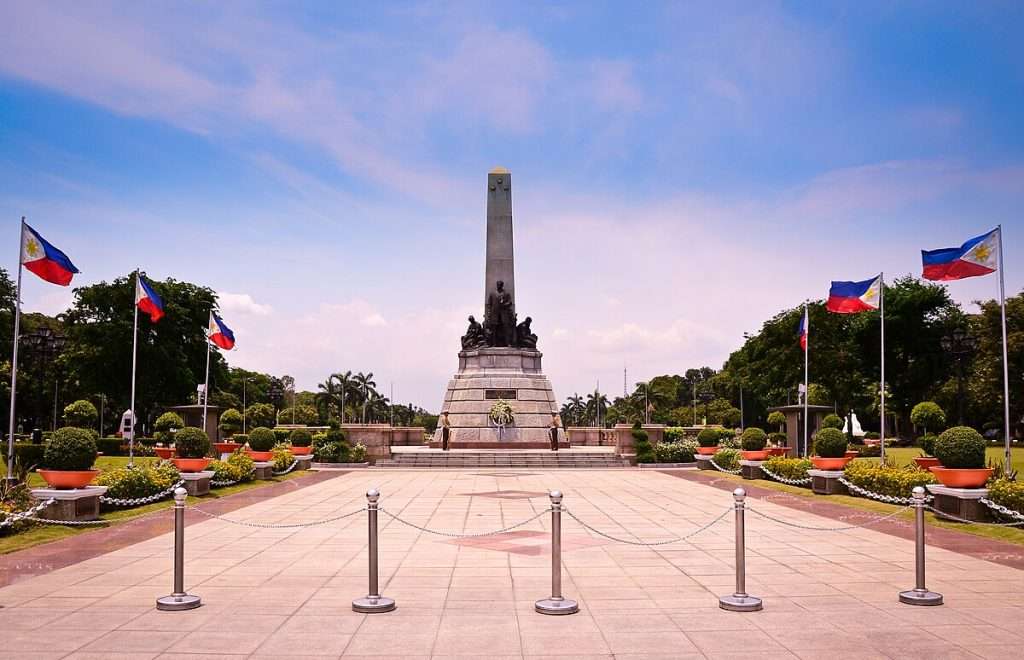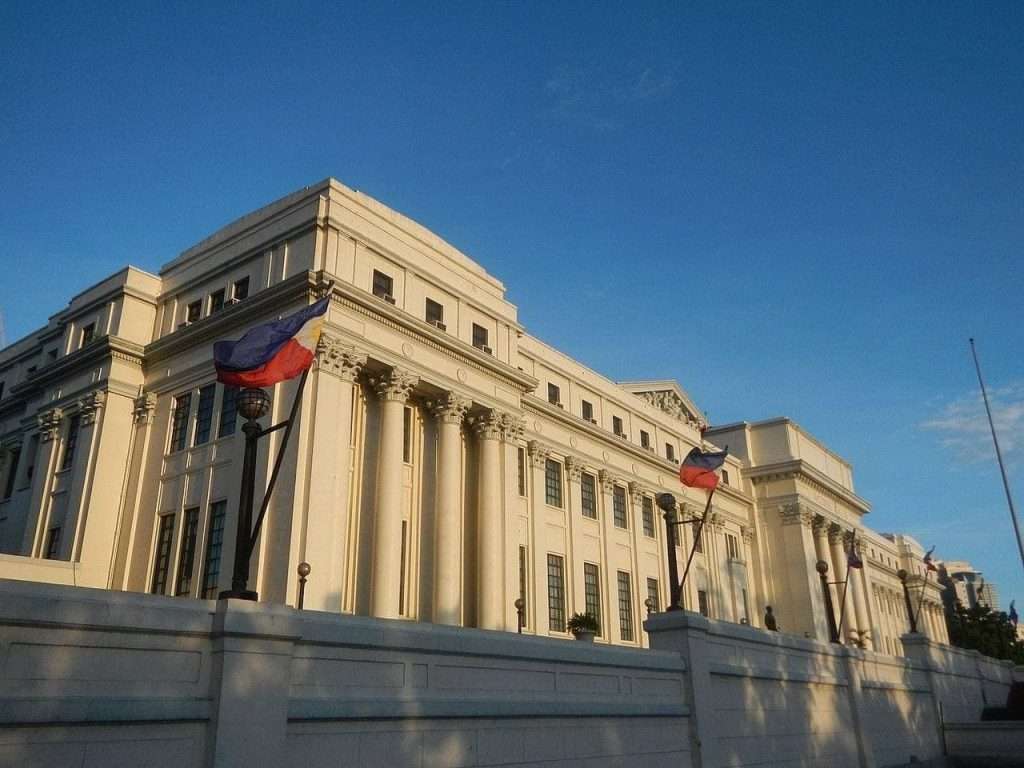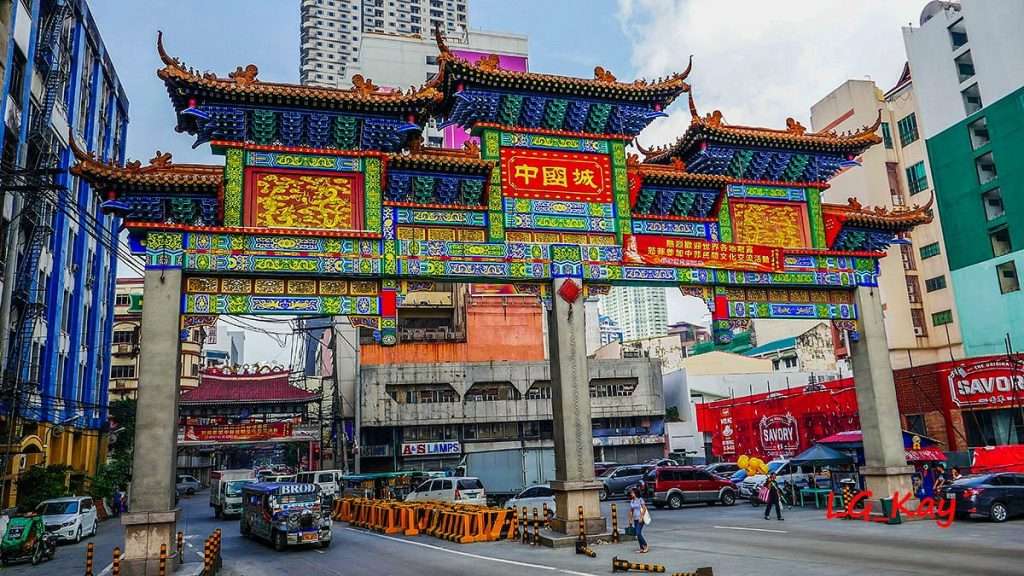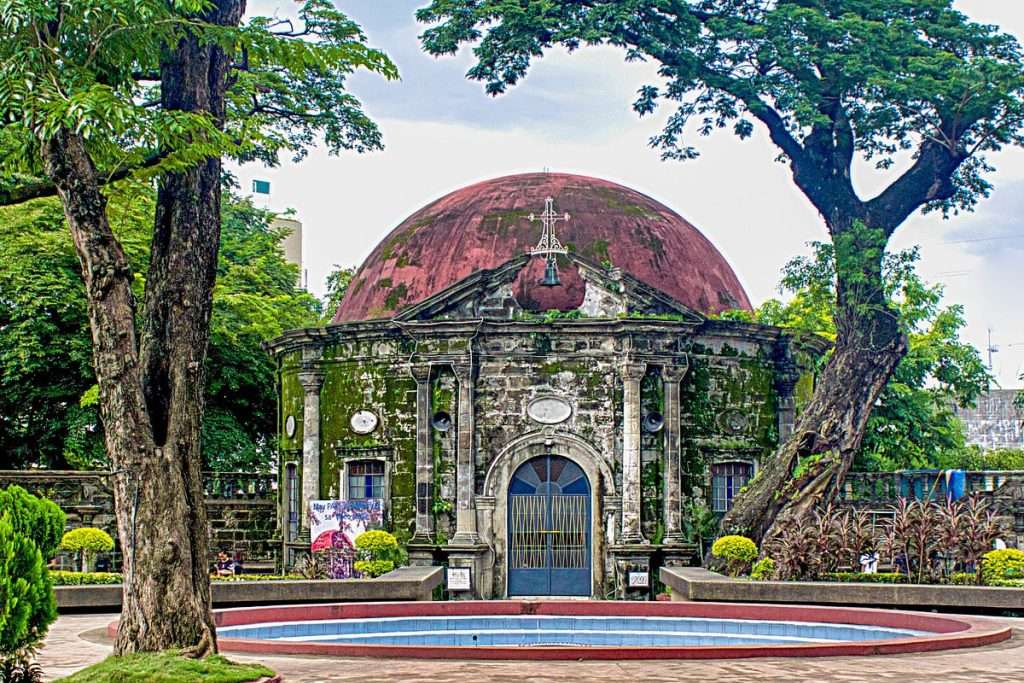1. Intramuros

- Fort Santiago
- Fort Santiago is a historic fortress located in the heart of Intramuros, Manila’s old walled city. Built by the Spanish in 1593, this bastion played a crucial role in the Philippines’ colonial history. The fort offers an immersive glimpse into Manila’s past, with its well-preserved ramparts, dungeons, and expansive gardens. Visitors can walk along the fort’s walls, which provide panoramic views of the surrounding area, including Manila Bay. The dungeons, once used as prisons, hold artifacts and exhibits that narrate the tumultuous history of the fort, including the life and imprisonment of national hero José Rizal. The gardens, meticulously landscaped, offer a peaceful retreat and a chance to reflect on the fort’s historical significance. Fort Santiago is a key site for understanding the Spanish colonial era and the struggle for Philippine independence.
- San Agustin Church
- San Agustin Church, located within Intramuros, is a masterpiece of Baroque architecture and a UNESCO World Heritage Site. Completed in 1607, it is the oldest stone church in the Philippines and a testament to the country’s colonial past. The church’s grand façade and intricately designed interior feature stunning frescoes, elaborate woodwork, and intricate carvings. The church is renowned for its historical significance as a site of numerous important events, including the 1869 papal visit and various weddings and ceremonies. The adjacent San Agustin Museum houses an extensive collection of religious artifacts, manuscripts, and ecclesiastical art, offering further insights into the church’s role in Philippine history and culture.
- Casa Manila
- Casa Manila is a museum situated in Intramuros, designed to replicate a 19th-century Spanish colonial residence. This meticulously restored house provides visitors with a vivid portrayal of upper-class life during the Spanish colonial period. The museum’s rooms are furnished with period-appropriate antiques, artwork, and decorative items that reflect the elegance and opulence of the era. Guided tours offer detailed explanations of the house’s architecture and the daily life of its inhabitants, including their customs, traditions, and social practices. Casa Manila serves as a cultural touchstone, preserving and showcasing Filipino heritage through its authentic representation of colonial-era domestic life.

2. Rizal Park (Luneta Park)
- Rizal Monument
- The Rizal Monument stands as a powerful symbol of Filipino nationalism and pride, dedicated to José Rizal, the Philippines’ national hero. Located in Rizal Park (Luneta Park) in Manila, the monument is a prominent historical landmark that commemorates Rizal’s contributions to the country’s fight for independence and his enduring legacy. The centerpiece of the monument is an impressive bronze statue of Rizal, depicted standing resolutely with a book in hand, symbolizing his intellectual and moral leadership. Surrounding the statue is a beautifully landscaped park featuring expansive gardens, tranquil fountains, and shaded walkways, which provide a serene environment for reflection and remembrance. The park often hosts cultural events, ceremonies, and public gatherings, making it a vibrant space that connects history with contemporary life. The monument is not only a tribute to Rizal but also a focal point for national pride and historical education.
- National Museum of the Philippines
- The National Museum of the Philippines is a premier cultural institution dedicated to preserving and showcasing the nation’s rich artistic and historical heritage. Located in Manila, the museum complex comprises several key institutions:
- National Museum of Fine Arts: This museum houses a vast collection of Filipino art, including works by renowned artists such as Juan Luna and Fernando Amorsolo. Highlights include the “Spoliarium,” a monumental painting by Luna, and various pieces that reflect the evolution of Philippine art from colonial times to the present.
- National Museum of Anthropology: Focuses on the cultural and ethnological aspects of the Philippines. It features artifacts, ethnographic displays, and exhibits that explore the diverse cultures, traditions, and social practices of the various ethnic groups in the country.
- National Museum of Natural History: Showcases the Philippines’ remarkable biodiversity and natural heritage. Exhibits include a giant tree skeleton, preserved flora and fauna, and interactive displays that illustrate the ecological significance of the archipelago’s varied ecosystems.
- Each branch of the National Museum complex provides a comprehensive understanding of Filipino culture, history, and natural beauty, offering visitors an immersive and educational experience that highlights the country’s rich heritage and artistic achievements.

3. National Museum Complex
- National Museum of Fine Arts
- The National Museum of Fine Arts is a cornerstone of Filipino cultural heritage, showcasing a comprehensive collection of art that spans centuries. Located in Manila, this museum is renowned for its extensive array of works by prominent Filipino artists, offering a deep dive into the evolution of Philippine art. One of its most celebrated pieces is “Spoliarium,” an iconic painting by Juan Luna that depicts a dramatic historical scene of Roman gladiators being stripped of their armor. The museum’s collection includes masterpieces by other notable artists such as Fernando Amorsolo, known for his lush landscapes and portraits, and various modern and contemporary artists who have shaped the country’s artistic landscape. The museum’s architecture itself is a testament to Filipino artistry, blending historical and modern design elements, and its exhibitions provide valuable insights into the cultural and historical contexts of the artworks.
- National Museum of Anthropology
- The National Museum of Anthropology offers an in-depth exploration of the Philippines’ rich ethnological and cultural heritage. Located in Manila, this museum is dedicated to preserving and showcasing the diverse traditions, practices, and artifacts of the country’s numerous ethnic groups. Exhibits include traditional clothing, ceremonial objects, and tools that reflect the daily lives and spiritual beliefs of various communities. Notable displays feature indigenous art, prehistoric artifacts, and cultural artifacts that illustrate the Philippines’ history from ancient times to the present. The museum plays a crucial role in documenting and celebrating the cultural diversity of the Philippines, providing visitors with a deeper understanding of the nation’s cultural fabric and the significance of its various traditions and practices.
- National Museum of Natural History
- The National Museum of Natural History highlights the extraordinary biodiversity and natural heritage of the Philippines. Situated in Manila, this museum is dedicated to the study and conservation of the country’s diverse ecosystems and wildlife. Key exhibits include a colossal skeleton of a tree, symbolizing the rich forest ecosystems of the Philippines, and a variety of preserved flora and fauna that illustrate the archipelago’s ecological diversity. The museum features interactive displays and dioramas that depict the habitats of native species, from tropical rainforests to marine environments. It also emphasizes conservation efforts and the importance of protecting the Philippines’ unique natural heritage. By offering an engaging and educational experience, the museum aims to foster a greater appreciation for the country’s natural resources and promote environmental stewardship.

4. Mall of Asia
- Mall of Asia
- The Mall of Asia, located in Pasay City, Manila, is one of the largest and most popular shopping malls in Asia, spanning over 600,000 square meters. This sprawling retail and entertainment complex provides an extensive array of shopping, dining, and recreational options that cater to a diverse range of interests and tastes.
- Shopping: The mall features a vast selection of retail stores, ranging from international luxury brands to local boutiques. It is home to numerous department stores, specialty shops, and electronics retailers, offering everything from high-end fashion and electronics to everyday essentials. The extensive shopping options ensure that visitors can find almost anything they need, all under one roof.
- Dining: The Mall of Asia boasts a wide variety of dining establishments, including casual eateries, upscale restaurants, and food courts offering both local and international cuisines. Whether you’re in the mood for traditional Filipino dishes, Asian delicacies, or Western favorites, the mall provides numerous dining choices to satisfy every palate. The diverse range of options includes fast food outlets, fine dining experiences, and themed restaurants.
- Entertainment: The mall is renowned for its entertainment facilities, including an IMAX theater that provides an immersive movie-watching experience with state-of-the-art sound and visuals. The complex also features a bowling alley, arcades, and various recreational activities suitable for families and individuals of all ages.
- Ferris Wheel and Bay Area: One of the mall’s standout attractions is the SM Mall of Asia Ferris Wheel, offering panoramic views of Manila Bay and the surrounding cityscape. The Ferris wheel is a popular spot for taking in stunning sunsets and enjoying a bird’s-eye view of the bustling mall below. Additionally, the mall’s bay area provides a picturesque setting for leisurely strolls along the waterfront, with vibrant lights and occasional outdoor performances adding to the ambiance.
- Events and Activities: The Mall of Asia frequently hosts a variety of events, including concerts, cultural performances, and seasonal festivities. The expansive event spaces and outdoor areas are often utilized for special occasions, providing entertainment and activities for visitors throughout the year.
- Transportation and Accessibility: The mall is easily accessible via major highways and public transportation, including buses and the Manila Light Rail Transit System (LRT). It also offers ample parking space for visitors arriving by car, making it a convenient destination for both locals and tourists.
- Overall, the Mall of Asia is more than just a shopping destination; it is a comprehensive entertainment and lifestyle hub that offers a rich blend of experiences, making it a must-visit landmark in Manila.

5. Cultural Center of the Philippines (CCP)
- Cultural Center of the Philippines (CCP)
- The Cultural Center of the Philippines (CCP) stands as a premier institution dedicated to the preservation and promotion of Filipino arts and culture. Located in Manila, the CCP Complex is a vibrant cultural hub that plays a central role in showcasing the rich artistic heritage of the Philippines and fostering the development of local and international performing arts.
- Main Theater: The centerpiece of the CCP Complex, the Main Theater is an architectural marvel known for its grandeur and versatility. With a seating capacity of over 1,800, it is designed to accommodate a wide range of performances, including large-scale theater productions, classical music concerts, and ballet performances. The theater’s state-of-the-art acoustics and lighting systems ensure that each performance is delivered with the highest quality, making it a sought-after venue for both local and international artists.
- Little Theater: Also known as the Tanghalang Huseng Batute, the Little Theater is an intimate venue with a seating capacity of around 600. This theater is renowned for its flexible staging and close-up seating arrangement, which allows for a more personal and engaging experience. It is frequently used for smaller theatrical productions, experimental performances, and workshops, offering a platform for emerging artists and new works.
- Galleries and Exhibitions: The CCP Complex houses several galleries that host a diverse range of visual art exhibitions, including paintings, sculptures, photography, and mixed media. These galleries provide a space for both established and up-and-coming Filipino artists to showcase their work and engage with the public. The exhibitions cover various themes, from traditional art forms to contemporary and experimental art, reflecting the dynamic and evolving nature of the Filipino artistic landscape.
- Performances and Events: The CCP Complex is a dynamic venue for a wide array of performances and cultural events throughout the year. These include traditional Filipino dance and music performances, international festivals, film screenings, and literary readings. The center actively supports and collaborates with various artistic groups and organizations, contributing to a vibrant cultural scene that celebrates the diversity and creativity of Filipino culture.
- Cultural and Educational Programs: In addition to its performance and exhibition spaces, the CCP also offers a range of educational programs and workshops aimed at nurturing young talent and promoting cultural awareness. These programs include artist residencies, masterclasses, and community outreach initiatives designed to engage with audiences of all ages and backgrounds.
- Architectural Significance: The CCP Complex itself is a notable architectural landmark, designed by National Artist for Architecture Leandro Locsin. Its modernist design, characterized by its clean lines and distinctive concrete structures, reflects both functionality and artistic vision. The complex includes open spaces, landscaped gardens, and reflective water features that complement its cultural mission.
- The Cultural Center of the Philippines is not only a venue for artistic expression but also a cultural beacon that fosters appreciation and understanding of Filipino arts and heritage. Its diverse offerings and commitment to excellence make it a cornerstone of Manila’s cultural landscape and a must-visit destination for those interested in experiencing the richness of Filipino culture..

6. Manila Ocean Park
- Manila Ocean Park
- Manila Ocean Park is a premier oceanarium and marine-themed park located in Manila, Philippines, designed to offer an immersive and educational experience about marine life and ocean conservation. This expansive facility combines interactive exhibits, live animal shows, and state-of-the-art displays to provide a comprehensive and engaging exploration of the underwater world.
- Interactive Exhibits: The park features a series of well-designed interactive exhibits that allow visitors to get up close with a variety of marine species. These exhibits include touch pools where guests can gently interact with starfish, sea urchins, and other marine invertebrates. Educational displays provide information about marine ecosystems, animal behaviors, and conservation efforts, making learning about the ocean both fun and informative.
- Animal Shows: Manila Ocean Park hosts a range of live animal shows that highlight the intelligence and agility of marine creatures. These performances include dolphin and sea lion shows, where visitors can witness the animals’ remarkable abilities and learn about their natural behaviors. The shows are not only entertaining but also aim to promote awareness about marine conservation and the importance of protecting ocean habitats.
- Walk-Through Tunnel: One of the park’s main attractions is its walk-through tunnel, which offers a unique perspective on marine life. Visitors can stroll through a transparent tunnel submerged in a large aquarium, providing panoramic views of various aquatic species swimming around them. The tunnel allows guests to observe sharks, rays, and schools of fish in a 360-degree environment, creating a sense of being within the ocean.
- Thematic Zones: Manila Ocean Park is divided into several thematic zones, each focusing on different aspects of marine life. These zones include:
- Oceanarium: Featuring large, open tanks with diverse marine species such as jellyfish, sea turtles, and tropical fish.
- Marine Sanctuary: Showcasing coral reefs and emphasizing the importance of marine conservation and reef protection.
- Predator Zone: Home to larger and more formidable ocean predators, including various species of sharks and rays.
- Educational Programs: The park offers a variety of educational programs and workshops aimed at children and adults. These programs cover topics such as marine biology, environmental stewardship, and animal care, providing hands-on learning experiences and fostering a deeper understanding of marine ecosystems.
- Conservation Efforts: Manila Ocean Park is committed to marine conservation and works to raise public awareness about the challenges facing ocean environments. The park supports various conservation initiatives and participates in research and rehabilitation programs for marine species.
- Dining and Souvenirs: The park includes dining options that allow visitors to enjoy meals with views of the oceanarium. Additionally, souvenir shops offer a range of marine-themed gifts and educational toys, allowing guests to take home a piece of their ocean adventure.
- Overall, Manila Ocean Park offers an engaging and educational experience that highlights the wonders of marine life while promoting the importance of ocean conservation. Its combination of interactive exhibits, live shows, and immersive displays makes it a must-visit destination for families, students, and anyone interested in the marvels of the underwater world.
7. Manila Baywalk

- Manila Baywalk
- Manila Baywalk is a vibrant and scenic waterfront promenade that stretches along the Manila Bay, offering a delightful space for both locals and tourists to enjoy the natural beauty and urban charm of the city. This expansive walkway provides a range of activities and experiences, making it a popular destination for leisurely outings and social gatherings.
- Leisurely Strolls: The Baywalk is designed for relaxation and enjoyment, with wide, paved pathways that make it ideal for leisurely walks. Visitors can take in the breathtaking views of Manila Bay, whether they are strolling alone, with a loved one, or with family. The promenade is lined with benches and shaded areas, allowing for comfortable rest stops while enjoying the surrounding scenery.
- Sunset Viewing: One of the Baywalk’s most renowned features is its stunning sunsets. The expansive views of Manila Bay provide an unobstructed horizon, making it a prime spot to witness the daily spectacle of the sun setting over the water. The colorful hues of the sunset create a picturesque backdrop, perfect for photography and relaxation. The tranquil ambiance during sunset makes it a favorite time for visitors to capture the beauty of the bay.
- Street Food and Dining: The Baywalk is known for its bustling food scene, with numerous street food vendors and food stalls offering a variety of local and international culinary delights. From traditional Filipino snacks like kwek-kwek (battered quail eggs) and fish balls to international favorites like burgers and ice cream, the area provides a diverse selection of affordable and delicious options. The casual dining experience along the promenade allows visitors to enjoy their meals while taking in the scenic views.
- Outdoor Performances: The Baywalk often hosts outdoor performances and cultural events, adding a lively and dynamic atmosphere to the area. Local musicians, street performers, and cultural groups frequently entertain visitors with live music, dance performances, and artistic displays. These events enhance the vibrant and festive ambiance of the promenade, making each visit a unique experience.
- Recreational Activities: In addition to strolling and dining, the Baywalk offers a range of recreational activities. Visitors can engage in jogging, cycling, or simply relaxing on the grassy areas and benches. The well-maintained landscape includes landscaped gardens, decorative lighting, and water features, contributing to a pleasant and inviting environment.
- Family-Friendly Environment: The Baywalk is a family-friendly destination with amenities that cater to all ages. Children can enjoy open spaces to play and explore, while adults can unwind and socialize. The safe and clean environment makes it a popular choice for family outings and gatherings.
- Accessibility and Transportation: The Baywalk is easily accessible from various parts of Manila and is well-connected by public transportation. It is also within walking distance from several hotels, restaurants, and other attractions, making it a convenient stop during a visit to the city.
- Overall, Manila Baywalk offers a perfect blend of natural beauty, vibrant street life, and recreational opportunities. Its scenic views, lively atmosphere, and diverse food offerings make it a must-visit destination for anyone looking to experience the charm and energy of Manila’s waterfront.

8. Poblacion
- Poblacion: A Contemporary Gem in Manila
- Poblacion is a dynamic and vibrant neighborhood in Makati City, Manila, known for its eclectic mix of restaurants, bars, art galleries, and nightlife. This area serves as a contemporary counterpoint to Manila’s more historical districts, offering a modern, urban experience that contrasts with the city’s colonial heritage.
- Eclectic Restaurants: Poblacion is celebrated for its diverse culinary scene, featuring a wide range of dining options that cater to various tastes and preferences. From upscale restaurants offering gourmet dishes to casual eateries serving street food and international cuisine, the neighborhood has something for everyone. Food enthusiasts can explore innovative menus and unique dining concepts, with many establishments focusing on fusion cuisine and creative culinary presentations.
- Trendy Bars: The neighborhood is also renowned for its vibrant bar scene. Poblacion’s bars range from chic rooftop lounges with panoramic city views to cozy speakeasies and lively pubs. These venues are known for their creative cocktails, craft beers, and relaxed atmospheres. The bar scene in Poblacion attracts both locals and visitors looking for a night out, offering a space to socialize, enjoy live music, and experience Manila’s nightlife.
- Art Galleries: Adding to its cultural appeal, Poblacion is home to several art galleries that showcase contemporary and modern Filipino art. These galleries often feature exhibitions from emerging and established artists, providing a platform for artistic expression and cultural dialogue. Visitors can explore a range of visual arts, including paintings, sculptures, and mixed media installations, making Poblacion a hub for creative and artistic endeavors.
- Nightlife: The neighborhood’s nightlife is a major draw, with a variety of entertainment options available throughout the week. From live music performances and DJ sets to themed parties and cultural events, Poblacion offers a lively and engaging nightlife experience. The area’s dynamic atmosphere is enhanced by its bustling streets and eclectic mix of venues, making it a popular destination for those seeking both relaxation and excitement after dark.
- Contemporary Vibe: Poblacion contrasts sharply with Manila’s historical areas, such as Intramuros, by presenting a modern, urban environment. While the historical districts reflect the city’s colonial past, Poblacion embodies contemporary urban living with its trendy, forward-thinking character. This blend of old and new gives visitors a well-rounded view of Manila, showcasing its rich history alongside its current cultural and social trends.
- Community and Culture: Beyond its attractions, Poblacion is known for its vibrant community spirit and cultural diversity. The neighborhood attracts a mix of locals, expatriates, and tourists, creating a cosmopolitan atmosphere that reflects Manila’s dynamic and multicultural nature. Regular cultural events, street fairs, and community gatherings further enhance the neighborhood’s appeal, making it a lively and inclusive space for social interaction and cultural exchange.
- In summary, Poblacion offers a contemporary and eclectic alternative to Manila’s historical areas. Its diverse range of restaurants, bars, art galleries, and nightlife options make it a vibrant destination that highlights the city’s modern and creative side, providing a unique counterpoint to the historical and cultural landmarks found elsewhere in Manila.

9. Chinatown (Binondo)
- .Binondo: The World’s Oldest Chinatown
- Binondo, located in Manila, Philippines, is recognized as the world’s oldest Chinatown, offering a rich tapestry of history, culture, and vibrant urban life. Established in 1594, Binondo has been a central hub for the Chinese-Filipino community for centuries and continues to be a bustling enclave known for its lively streets, traditional Chinese eateries, unique shops, and colorful cultural festivals.
- Bustling Streets: Binondo’s streets are perpetually animated, reflecting the dynamic energy of the district. The area is characterized by narrow, bustling roads lined with a mix of old and new establishments. Visitors can immerse themselves in the vibrant atmosphere as they navigate through crowded sidewalks filled with vendors, shoppers, and locals engaged in their daily routines. The lively environment is particularly notable during peak hours and special events, making it a lively and engaging destination.
- Traditional Chinese Eateries: Binondo is renowned for its extensive array of traditional Chinese restaurants and eateries. From casual street food stalls to elegant dining establishments, the district offers a diverse selection of Chinese cuisine that caters to all tastes and preferences. Signature dishes include dim sum, noodles, dumplings, and roasted meats, often prepared using authentic recipes passed down through generations. These eateries are not only popular among the local Chinese-Filipino community but also attract food enthusiasts from around the world.
- Unique Shops: The commercial landscape of Binondo is dotted with a variety of shops offering a wide range of goods. Traditional herbal medicine shops, specialty tea houses, and stores selling Chinese groceries and ingredients are common, providing visitors with a glimpse into the culinary and medicinal traditions of Chinese culture. Additionally, the area features shops selling intricate Chinese decorations, jewelry, and textiles, adding to the district’s charm and appeal.
- Cultural Festivals: Binondo is a focal point for numerous cultural festivals and events throughout the year. The most prominent is the Chinese New Year celebration, which transforms the district into a vibrant festival ground. The streets come alive with colorful dragon and lion dances, traditional music performances, and elaborate parades. The festival is marked by spectacular decorations, fireworks, and various cultural activities that celebrate Chinese heritage and traditions. Other cultural events include the Mid-Autumn Festival and the annual Binondo Food Walk, which highlights the area’s culinary delights.
- Historical Landmarks: Beyond its modern commercial appeal, Binondo is steeped in historical significance. The district is home to several historical landmarks, including the centuries-old Binondo Church (also known as the Minor Basilica of St. Lorenzo Ruiz), which serves as a testament to the area’s rich religious and cultural history. The church is a center of community life and a site of historical importance, attracting both worshippers and history enthusiasts.
- Community and Heritage: Binondo continues to be a vibrant center for the Chinese-Filipino community, preserving cultural traditions while integrating into the broader fabric of Manila’s diverse society. The district is known for its strong sense of community and its role in fostering cultural exchange between Filipino and Chinese cultures.
- Accessibility and Tourism: Binondo is easily accessible from other parts of Manila, making it a convenient destination for both locals and tourists. Its central location and well-connected transportation options facilitate easy exploration of the area’s attractions.
- In summary, Binondo stands as a historic and cultural landmark, offering a dynamic blend of traditional Chinese culture and modern urban life. Its bustling streets, diverse culinary offerings, unique shops, and vibrant cultural festivals make it a must-visit destination for those interested in exploring Manila’s rich heritage and experiencing the lively essence of the world’s oldest Chinatown.

10. Paco Park
- Paco Park: A Tranquil Urban Oasis
- Paco Park, nestled in the heart of Manila, offers a serene escape from the bustling city life. Once a cemetery, this tranquil park has been transformed into a lush, green haven that provides a peaceful environment and a touch of historical charm amidst the urban landscape. Its historical and natural features make it a unique and cherished destination for both locals and visitors.
- Historical Significance: Originally established as a cemetery in 1809, Paco Park served as the final resting place for many prominent figures during the Spanish colonial era. Over the years, it evolved from its somber origins into a public park, preserving its historical essence while becoming a beloved community space. The park’s transformation reflects Manila’s ability to blend history with contemporary urban life.
- Lush Greenery: The park is renowned for its well-maintained gardens and expansive green spaces. Shaded by a canopy of trees and adorned with manicured lawns, Paco Park provides a refreshing contrast to the surrounding cityscape. The lush foliage and serene pathways create an inviting atmosphere for leisurely walks, quiet reflection, and relaxation. Visitors can enjoy the calming sounds of nature and the visual appeal of colorful flower beds and ornamental plants.
- Quaint Chapel: At the heart of Paco Park is its historic chapel, known as the Paco Park Chapel. Originally built in 1814 as a mortuary chapel, it remains an important architectural and cultural landmark. The chapel’s Spanish colonial architecture features intricate details, including arched doorways, a bell tower, and beautiful stonework. Today, the chapel is used for various religious ceremonies, including weddings and memorial services, and stands as a symbol of the park’s rich heritage.
- Peaceful Environment: The park’s tranquil ambiance makes it an ideal location for peaceful contemplation and escape from the city’s hustle and bustle. Visitors often come to Paco Park to unwind, read a book, or simply enjoy a moment of solitude. Its quiet environment, combined with the gentle rustling of leaves and the chirping of birds, creates a soothing retreat from the urban noise.
- Cultural and Community Events: Despite its serene setting, Paco Park is not devoid of activity. The park hosts various cultural and community events throughout the year, including concerts, art exhibits, and local festivals. These events add a dynamic element to the park, bringing together people from different walks of life to celebrate art, culture, and community spirit.
- Historical Monuments: Within the park, visitors can find historical monuments and markers that provide insights into the cemetery’s past. These include old gravestones and memorial plaques that offer a glimpse into the lives of those who were once laid to rest there. The preserved elements of the cemetery’s history contribute to the park’s unique character and educational value.
- Accessibility and Amenities: Paco Park is conveniently located and easily accessible from various parts of Manila. It features amenities such as benches, picnic areas, and pathways designed for comfortable strolling. The park’s well-maintained facilities ensure a pleasant experience for visitors of all ages.
- Conservation and Maintenance: The transformation of Paco Park from a cemetery to a public park reflects a commitment to preserving historical heritage while promoting environmental conservation. The ongoing maintenance of the park ensures that it remains a clean, safe, and inviting space for all who visit.
- In summary, Paco Park stands as a tranquil urban oasis that blends historical significance with natural beauty. Its lush greenery, quaint chapel, and peaceful environment offer a serene retreat in the heart of Manila, making it a cherished destination for relaxation, reflection, and cultural appreciation.
Manila, the vibrant capital of the Philippines, is a city that harmoniously blends historical significance with modern dynamism. Its rich tapestry of cultural and historical landmarks, such as Intramuros and Rizal Park, offers a deep dive into the nation’s past, celebrating its colonial history and national heritage. Meanwhile, contemporary attractions like the Mall of Asia, Poblacion, and Manila Baywalk highlight the city’s modern lifestyle, diverse culinary scene, and bustling nightlife.
From the tranquil Paco Park, once a cemetery now a serene urban retreat, to the world’s oldest Chinatown in Binondo, Manila provides a multifaceted experience that caters to a wide range of interests. The city’s ability to preserve its historical charm while embracing contemporary trends makes it a unique and compelling destination.
Overall, Manila’s blend of historical depth, cultural richness, and modern vibrancy makes it an exciting and enriching place to explore, offering something for every visitor while continuously evolving as a dynamic metropolis.
YOU MY ALSO LIKE



